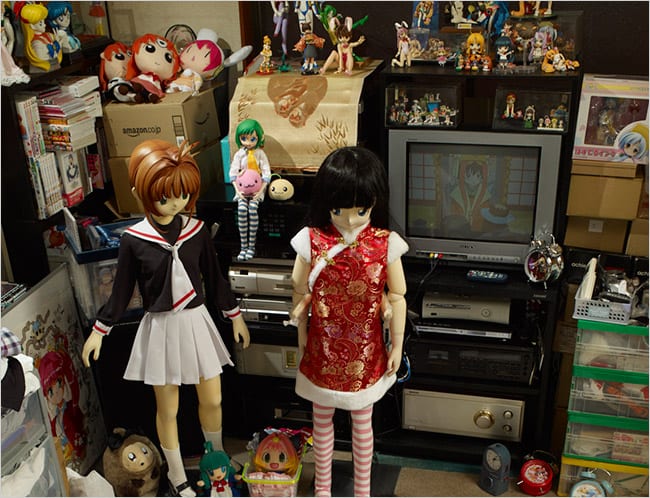Meet Nisan, a 37-year-old man who lives with his parents outside a suburb of Toyko. Now meet his girlfriend Nemu, who is about 12 years old.
Nisan’s girlfriend isn’t a real 12-year-old girl, fortunately. She’s a body pillow with a picture of an X-rated anime character on it, from a game called Da Capo. Nisan brings Nemu, who has wide, child-like eyes, a pixie haircut, a blue bikini and gold ribbons in her hair, to restaurants, karaoke and the beach.
A reporter for the New York Times magazine joined Nisan and his pillow for lunch to talk about their real-life “Lars And The Real Girl” relationship—glibly scribbling about their sick relationship with no mention whatsoever of how this tween girl fetish is one wrong move away from being criminal.The Times suggests two factors of Japan’s culture are conflating to make Nisan’s relationship possible: one, the general popularity of anime culture (called otaku) which hath wrought some obsessive fans; and two, difficulties in Japanese dating culture, rendering over a quarter of men and women between the ages of 30 and 34 virgins, according to a government survey.

Maybe that’s all true. But that sounds too kind to me to describe a situation that looks like mental illness coupled with objectification of women and the fetishization of prepubescent girls. Later on in the article, the Times speaks with a man named Momo. He sleeps each night with a body pillow of an anime character named Karada-Chan, a sixth grader, and two other pillows based on preteen characters, who have large nipples and big labia. Momo also lives with his sister and his three-year-old niece, whom he says he doesn’t have feelings for. Ugh.
One could argue these guys are better off for society dating/sleeping with anime body pillows, rather than lusting after 12-year-old human girls. Who are they harming, really, with a body-pillow love affair? Yet, one wonders if lusting after flesh-and-blood middle schoolers is far behind.
Still, actual tween girls might not even interest them and that may be even more worrisome. Nisan’s relationship with Nemu, for example, is wrapped up in a video game-related fantasy and that’s where I think the mental illness comes in: it’s a fantasy turned into a reality where he has all the control. The Japanese even have a word for these fetish fantasies, called moe:
In an ideal moe relationship, a man frees himself from the expectations of an ordinary human relationship and expresses his passion for a chosen character, without fear of being judged or rejected.
Dating a real woman is not as easy, because we talk back, leave, and have our own needs and opinions. Nisan, who works in tech support, did have a real-live girlfriend once, but she dumped him. (Wonder why?)

I wish I could just write him off as a sad loser. But Nisan’s perversions, and the perversions of these other men, clearly spur from a Lolita-y sexual dynamic between older men and young women. Wish the Times Magazine acknowledged that.
[New York Times Magazine]
Original by Jessica Wakeman
